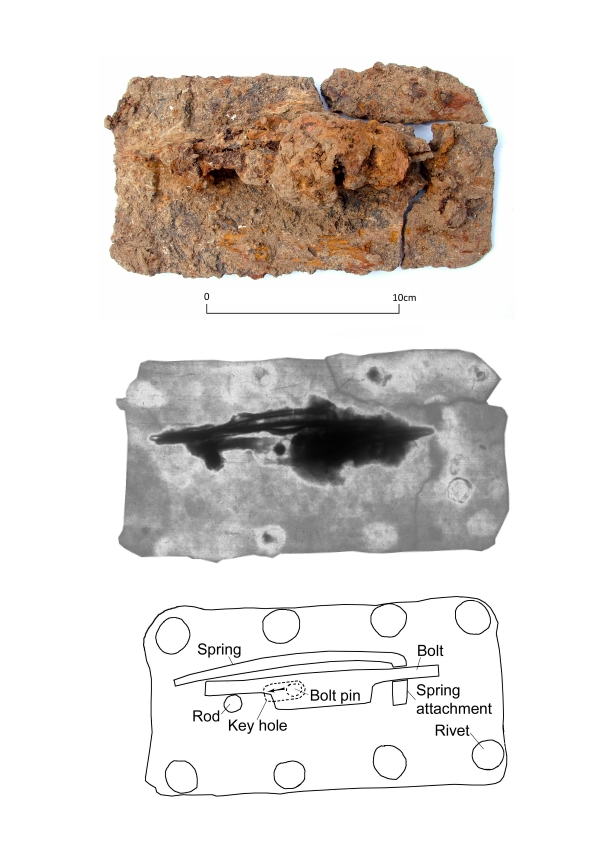
Our image for VM_365 Day 51 is of a find from an excavation carried out on the site of a housing development close to the sea front at Westgate on Sea in 2006. This composite iron object was found among features that represent a phase of a settlement which seems to date to the 8th or 9th century AD. Another of the few Viking age sites known in Thanet.
This complex iron block which was recovered from the fill of one of the pits appears to have been a lock mechanism, perhaps originally attached to a box or chest. The mechanism has been reconstructed from the evidence of several X-ray photographs taken at varying intensities which revealed the hidden structure on the back of the plate.
The 2-3mm thick flat iron plate would have been mounted on the external surface of the chest with two rows of four iron rivets or nails arranged along each of the long axes. The front of the plate was pierced with an irregular key hole, centrally placed on the short axis but offset slightly on the long axis.
An iron spring with a right-angled bend was attached to the inside face of the plate. A sliding bolt rested on a rod that projected from the plate, held in place by the spring bearing down on the bolt where it pressed against the rod. The bar appears to have passed through a slot in the spring at a point above the attachment where the spring was fixed to the plate. The bolt would probably have projected a little further, fitting into a socket or staple fitted in the box.
The lock would have been operated by pushing a simple key through the hole in the plate. The key pushed against the bolt pin located on the underside of the sliding bolt at the end of the keyhole forcing the bolt away from the socket which held the box shut. In its present state the mechanism appears to be in the locked position and sliding the bar would need a little force to lift the spring where it was bearing down on the rod.
Lock fittings and keys are a common find on both Roman and Anglo-Saxon sites and the common discovery of bunches of keys in Anglo-Saxon female graves are interpreted as a symbols of female domestic authority, as holders of the keys to a household chest where the valuable items were kept.